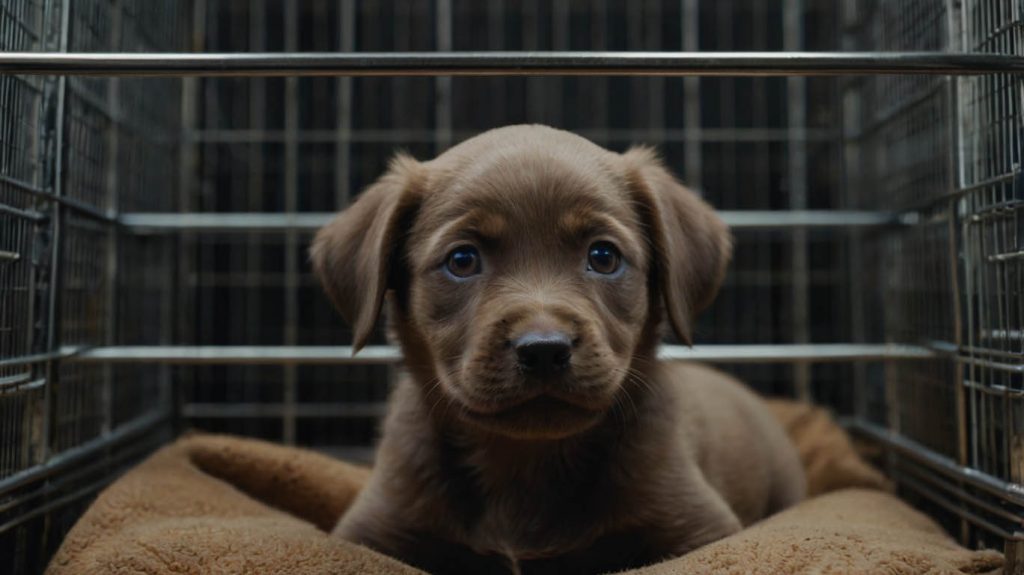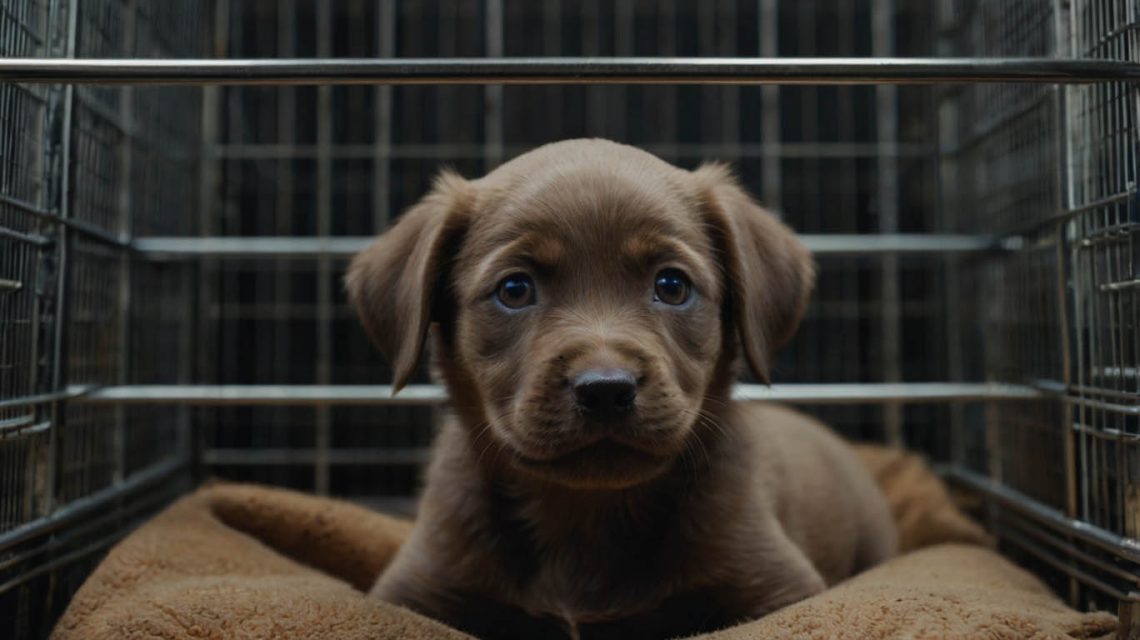It’s the middle of the night. You’re exhausted, but your new puppy is crying from their crate like their heart is breaking. If you’ve found yourself frantically Googling how to get puppy to be quiet in crate, you’re not alone—and you’re not a bad pet parent. This phase is common, temporary, and entirely fixable.
Crate training is one of the most valuable skills you can teach your puppy. However, it requires consistency, understanding, and lots of patience. In this comprehensive guide, you’ll discover why puppies cry in crates, what steps you can take to stop the noise, and how to build trust and calm with your little companion.
Why Is My Puppy Crying in the Crate?
Puppies cry in crates for many reasons, and understanding the “why” is crucial to creating an effective plan. Here are the most common causes:
- Separation anxiety or loneliness
- Lack of crate familiarity
- Potty needs
- Boredom or excess energy
- Discomfort or fear of confinement
Pinpointing the cause is the first step toward answering how to get puppy to be quiet in crate the right way.

Case Study: Daisy the Determined Whiner
Daisy, a 10-week-old Cocker Spaniel, howled and scratched every time she was placed in her crate. Her owners initially comforted her immediately—which unknowingly rewarded her crying. Once they introduced a slow crate-training routine, added toys, and used white noise at bedtime, Daisy began settling quietly. Within a week, her crate became her favorite spot.
Daisy’s story proves that with structure and consistency, how to get puppy to be quiet in crate becomes far more manageable.
The Foundation: Make the Crate a Positive Space
Dogs are den animals by nature, and when introduced properly, crates become a safe haven. Follow these tips to create that positive association:
- Never use the crate as punishment
- Feed meals inside the crate
- Place treats or favorite toys inside
- Leave the crate door open during the day
When the crate becomes a place of reward rather than restriction, your puppy will naturally relax.
Establishing a Crate Routine for Calm Nights
Just like human babies, puppies do best with a structured routine. Here’s a sample evening schedule:
| Time | Activity |
|---|---|
| 6:00 PM | Dinner |
| 6:30 PM | Potty break and playtime |
| 7:30 PM | Wind-down period indoors |
| 8:30 PM | Crate training with chew toy |
| 9:00 PM | Last potty break |
| 9:15 PM | Crate for bedtime |
This calm, consistent routine helps puppies anticipate sleep, lowering stress and reducing the chances of crate-related crying.
How to Get Puppy to Be Quiet in Crate at Night
Nighttime is often when crate crying peaks. Your puppy is tired, confused, and separated from you. Use these proven methods:
- Keep the crate near your bed initially so your puppy can sense your presence
- Use a ticking clock or heartbeat toy to simulate mom and littermates
- Add a worn T-shirt with your scent for comfort
- Play white noise or classical music to drown out unfamiliar sounds
These small comforts go a long way toward achieving your goal of how to get puppy to be quiet in crate quickly and kindly.

What to Do When Your Puppy Cries in the Crate
One of the toughest challenges? Deciding whether to respond or ignore. Here’s a balanced approach:
- Wait a moment: Give your puppy 1–2 minutes to settle.
- Calmly reassure: If crying continues, say “quiet” or use a soothing tone from nearby.
- Avoid opening the crate unless it’s clearly a potty emergency.
- Reward silence: The moment your pup is quiet, praise and reward.
This teaches that calm behavior gets attention—not whining.
Daytime Crate Training: Building Confidence
Crate training doesn’t start at night—it starts during the day. Practice while you’re home:
- Encourage your puppy to enter the crate with treats.
- Close the door for short intervals (1–5 minutes), then increase gradually.
- Stay in the room at first, then practice leaving briefly.
- Always return calmly and reward silence.
This builds independence and reduces the need for nighttime crying.
Crate Toys and Soothing Tools to Keep Your Puppy Calm
Sometimes, your puppy just needs a healthy distraction. Try these:
- Frozen KONG stuffed with peanut butter or pumpkin
- Soft plush toys with heartbeat simulators
- Long-lasting chew sticks (safe for puppies)
- Scented blankets or crate liners
Offering something comforting and engaging helps address boredom—one of the root causes of crate crying.
Avoid These Common Crate Training Mistakes
Even with the best intentions, you might unknowingly prolong the problem. Watch out for these pitfalls:
- Letting your puppy out every time they cry (reinforces whining)
- Crating for too long without breaks
- Using the crate only when leaving home
- Being inconsistent with routines and boundaries
Correcting these mistakes accelerates progress and brings you closer to the answer to how to get puppy to be quiet in crate reliably.
How Long Will It Take to Quiet a Puppy in a Crate?
The answer varies. With consistent training, most puppies adjust within:
- 3–5 nights for minor crying
- 7–14 days for more vocal puppies
- 3+ weeks if there are anxiety or health issues
Consistency is your best friend. Don’t give up—the quiet will come.
When to Get Professional Help
If your puppy continues crying despite trying every strategy, consider:
- Consulting a certified dog trainer or behaviorist
- Speaking with your veterinarian to rule out discomfort
- Looking into puppy socialization classes for emotional development
Persistent anxiety may need personalized intervention.
FAQs
Is it okay to ignore puppy crying in the crate?
Yes, if it’s brief and not a result of pain or potty needs. Reward silence instead of noise.
Should I cover my puppy’s crate at night?
If it calms them and they’re not chewing the cover, yes. It mimics a den-like environment.
Can I let my puppy sleep in my bed instead?
You can, but it may delay crate training and independence. It’s best to commit to one strategy early on.
How long should my puppy stay in the crate?
Use the age-in-months rule: age (in months) + 1 = max hours in the crate.
Does crate size matter?
Absolutely. It should be just big enough for standing, turning, and lying down—too big may cause potty accidents.
Conclusion: Silence Starts with Patience and Practice
If you’re trying to figure out how to get puppy to be quiet in crate, remember—every whimper, cry, and howl is temporary. Your puppy is learning, adapting, and building trust in their new space. By using gentle techniques, positive reinforcement, and a consistent routine, you’ll teach your pup that the crate is a place of peace—not punishment.
Soon enough, your nights will be quiet, and your mornings will be filled with tail wags instead of frustration.


